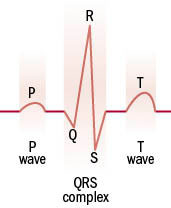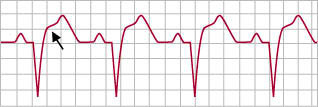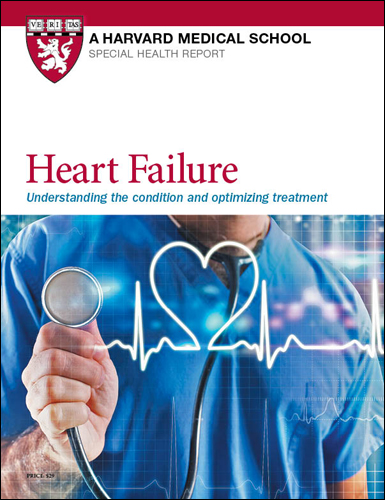What is acute coronary syndrome?
This umbrella term includes heart attacks and related emergencies that result from a sudden drop in blood flow to the heart.
- Reviewed by Deepak L. Bhatt, M.D., M.P.H, Former Editor in Chief, Harvard Heart Letter

The term "heart attack" is a simple yet evocative way to convey the seriousness of this potentially life-threatening event. The official name — myocardial infarction — is more descriptive. Myo refers to muscle, cardial relates to the heart, and infarction denotes a disruption of blood flow (usually due to a clot) that starves and kills nearby tissue.
To physicians, heart attacks are part of a spectrum of related emergencies known as acute coronary syndrome (ACS). Most of the time, the underlying cause of ACS is the gradual buildup of fatty deposits called plaque inside the arteries supplying the heart.
"Many years of high levels of cholesterol and glucose in the bloodstream can take a toll on the lining of the arteries throughout the body," says cardiologist Dr. Elliott Antman, professor of medicine at Harvard Medical School. Because the arteries feeding the heart are so small, they're especially vulnerable to become narrowed by plaque, he explains.
A trio of related conditions
Every year, more than a million people in this country are hospitalized for ACS, according to a Feb. 15, 2022, JAMA review article written by Harvard Heart Letter editor in chief Deepak L. Bhatt and colleagues. Defined by a sudden reduction in blood flow to the heart, ACS includes two distinct types of heart attacks and unstable angina, a serious condition that's often a prelude to a heart attack. All warrant immediate medical attention.
For all three, the most common symptom is chest discomfort (see "Symptoms of acute coronary syndrome"). To distinguish between different types of ACS, doctors rely on an electrocardiogram (ECG), a brief measurement of the heart's electrical activity. "The ECG is so important, the guidelines recommend that people receive this test within 10 minutes of arriving at the emergency department," says Dr. Antman. Another crucial test is a blood test that measures troponin, a substance released by damaged heart muscle.
Symptoms of acute coronary syndromeMost people (79% of men and 74% of women) with acute coronary syndrome report chest discomfort as their main symptom. Pain may also occur between the shoulder blades or in the neck, jaw, stomach, or left arm and shoulder. Other possible symptoms include
|
ECG signatures
A distinctive "hump" on the ECG (a rise in the ST segment, which is normally flat; see "Recording a heartbeat") usually means one of the main coronary arteries is completely blocked. Most of the time, this happens when the fatty plaque ruptures, producing a blood clot that plugs up the artery. The interruption in blood flow damages a swath of heart muscle cells, causing troponin levels to rise. Known as an ST-segment elevation myocardial infarction (STEMI), this is the most serious type of heart attack.
However, about 70% of people with ACS have an artery that's not completely blocked, so a trickle of blood still gets through, Dr. Antman says. Their ECGs show a variety of different patterns, often involving dips instead of rises in the ST segment. Those whose troponin levels indicate heart damage are diagnosed with a less severe (but still worrisome) type of heart attack called a non-STEMI (NSTEMI). People with these types of ECG changes but no evidence of heart damage are said to have unstable angina.
Recording a heartbeat
Different forms of acute coronary syndrome produce distinct electronic signatures, as shown below:
ST-segment elevation myocardial infarction (STEMI). The ST segment of the ECG is usually flat. If it has a humped, elevated appearance (see arrow), a serious heart attack, called a STEMI, is probably occurring.
Non-STEMI (NSTEMI). If the ST segment dips down instead of up, or if the T wave is inverted (see arrow), a less dangerous type of heart attack, called an NSTEMI, is probably occurring. If the changes are only temporary, these patterns may indicate unstable angina. |
Treating ACS
If you suspect you are experiencing ACS, call 911, and then chew and swallow a regular-strength (325-mg) aspirin, which helps discourage blood clots. At the emergency department, people with ACS may receive clot-busting drugs, and many undergo cardiac catheterization, in which a doctor guides a thin, flexible tube (catheter) through a blood vessel to the heart to check for blockages. Most STEMIs and some NSTEMIs are treated with a procedure to restore the disrupted blood flow. In some people, that means an artery-opening technique done during the catheterization (angioplasty plus a stent). Other people need a more elaborate procedure called bypass surgery, in which a healthy blood vessel from the chest, arm, or leg is grafted onto the heart to bypass the blocked artery.
Dr. Antman's advice? "Do everything you can to avoid ending up in this situation," he urges. That means following all of the tried-and-true strategies to keep your heart and arteries healthy: eat a healthy diet, get regular exercise, don't smoke or vape, manage your stress, and take any necessary medications to keep your blood pressure, blood sugar, and cholesterol levels in a healthy range.
Image: © LaylaBird/Getty Images
About the Author

Julie Corliss, Executive Editor, Harvard Heart Letter
About the Reviewer

Deepak L. Bhatt, M.D., M.P.H, Former Editor in Chief, Harvard Heart Letter
Disclaimer:
As a service to our readers, Harvard Health Publishing provides access to our library of archived content. Please note the date of last review or update on all articles.
No content on this site, regardless of date, should ever be used as a substitute for direct medical advice from your doctor or other qualified clinician.











 During a normal heartbeat, an electrical impulse first activates the heart's upper chambers (the atria), producing a small blip called the P wave. Next, it activates the main pumping chambers (ventricles), creating a sharp rise and fall called the QRS complex. The final T wave is a recovery period as the heart muscle relaxes. In a normal ECG (right), the P wave, QRS complex, and T wave occur in sequence in a regular pattern.
During a normal heartbeat, an electrical impulse first activates the heart's upper chambers (the atria), producing a small blip called the P wave. Next, it activates the main pumping chambers (ventricles), creating a sharp rise and fall called the QRS complex. The final T wave is a recovery period as the heart muscle relaxes. In a normal ECG (right), the P wave, QRS complex, and T wave occur in sequence in a regular pattern.






